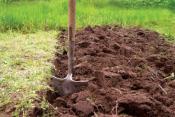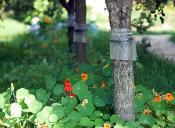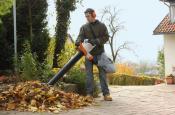Search
Login
Recommended
Powder coating, what is it where powder coating is used, powder coating technology
The latest powder coating technologies have significantly displaced the liquid method of painting metal coatings. Products that have undergone such painting have additional protective and decorative properties.
The characteristics of powder coating make it possible to apply it in various industries and spheres of the national economy, and advanced equipment has made available the use of powder paints in everyday life.
Content
- What is powder coating
- Advantages and disadvantages of powder coating
- The technological process of powder coating and its components
- DIY powder coating
- Scope of powder coating
What is powder coating
The method of spraying powder paint on the surface of the product was developed in the 50s of the twentieth century. In Russia, it began to be actively applied from the 80s.

The essence of painting is as follows: during the spraying process, the smallest particles of dry paint are charged electrically (electrification by friction or from an external source). The product to be painted has an opposite charge, and paint particles settle on its surface.
A monolithic high-quality coating is formed upon further heating of the product in a special polymerization chamber. The powder melts, wets the surface of the product and forms a strong film.
Advantages and disadvantages of powder coating
Comparative characteristics of powder and liquid painting
Considering the two methods of dyeing, first of all, I want to note the environmental friendliness and efficiency of powder coating. Indeed, when painting toxic, flammable solvents are not used, and dry paint is consumed very economically (particles that have not settled on the product can be used the next time).
The main advantages of the powder method over liquid painting:
- Physico-chemical properties of the coating (resistance to corrosion and temperature extremes, impact resistance) of finished products, powder coated, are better than identical indicators for liquid painting.
- Powder coating evenly lays on any embossed surface.

- Painting is carried out without prior priming of the product.
- It is enough to apply one layer of dry matter, while to obtain the desired result with the liquid method, sometimes multilayer painting is required.
- Repainting products from one color to another is easier and faster.
- Losses of liquid materials (paints) reach 40%, dry up to 4%.

- The cycle of painting with powder paint is much less (about 1.5-2 hours) than with liquid paint (it takes time to dry the applied layer of the paint material).
- Powder paints do not require special storage conditions, unlike liquid flammable materials.
- Products painted with dry paints can also be transported without special packaging, since a strong protective polymer film forms on the surface.
- Powder coating technology is highly automated and does not require long-term staff training.
- Staining occurs without emitting a chemical odor, which improves sanitary and hygienic working conditions.
- Possessing indisputable advantages, dry painting practically replaced liquid painting from metal industry.
Possible disadvantages of powder coating
Some disadvantages of powder coating can be noted:

- the creation of a certain temperature regime for powder melting (150-220 degrees) does not allow staining wood and plastic products;
- sufficiently large investments (one-time);
- limited use of equipment (in a small spray booth it will not be possible to paint large parts, and a large-sized furnace will be inefficiently used for processing small items);
- it is difficult to adjust the application of paint with a thin layer;
- difficulties may arise when painting in low temperature conditions.
The technological process of powder coating and its components
Process steps
The process of coloring products with the powder method can be divided into three main stages:
- Surface preparation.
- Application of polymer dyes.
- Fixing of the paint, by melting and subsequent cooling.
Consider each of the steps in more detail.
First stage consists in cleaning the surface from dirt, oxides, and its degreasing (removal of lubricant). If the area of \u200b\u200bthe product is not large, then cleaning is carried out manually with a cloth dampened in a special detergent or white spirit. For processing a large number of products, there are chambers in which the surface is cleaned with fine steel shot or sand.
Products that will be operated outdoors and exposed to the environment undergo phosphotation (steel and cast iron surfaces) or undergo chromating (aluminum surfaces). These procedures contribute to the better strengthening of powder coating on the surface, and increase the protective properties of the metal.
On the second stage paint is sprayed onto the surface of the product in a special chamber or using a hand-held spray gun.

When painting in the spray booth, the colored powder is poured into the hopper, and with the help of the compressor, the supply of compressed air begins to electrify the paint particles. The pump delivers air-powder paint to the sprayer.
When using a hand gun, colored powder receives an electrostatic charge, and gets in the form of an aerosol on a metal surface.
The product to be painted must be grounded, which allows the charged particles of paint to hold firmly to the surface.
Not settled paint is captured by the filter system installed in the spray booths and can be reused.
Third stage melting and surface formation (polymerization). To melt paint particles and fix them on the surface, the product is exposed to high temperatures (up to 250 degrees) in a thermal furnace. The temperature regime and polymerization time depend on the type of powder paint.

Necessary equipment and room requirements
To perform all stages of the technological process, special equipment for powder painting is necessary.
The spray booth limits the spread of unfinished paint particles and prevents dust from entering the production hall. Often, cameras are equipped with a filtration system (hand operator), which purifies the air and catches up to 98% of unspent paint. In addition, the cameras may contain a reverse feed ejector, a controller, and an exhaust fan.

The airbrush (spray) can initially enter the spray booth or be purchased separately. With its help, particles of paint are charged, and sprayed onto the surface in the form of an aerosol.
The sprayers also include hand guns, which are used both in production and in everyday life.

If compressed air is not provided in the spraying chamber, a compressor is required to supply air under pressure.
A drying chamber is a furnace in which melting, polymerization of paint takes place. Ovens for industrial use are gas and electric. Most furnaces are equipped with a control panel that allows you to set various temperature conditions and automatic shutdown times.

To facilitate the painting process, you can additionally use transport systems for moving products, an industrial vacuum cleaner (for cleaning filters and when switching from one color to another).
Large manufacturing enterprises use automated powder coating lines for finished products.
You can arrange a small paint shop on the territory of 100-150 square meters. meters. This will be enough for the location of the spraying chamber, the polymerization furnace, two warehouses (for products for painting and finished products) and a site for preliminary surface treatment.
The spray booth should be at least 5 meters away from possible sources of ignition.
Types of powder paints

Depending on where the painted product will be used, various types of paints are used. In general, dry paints can be divided into two groups.
- Thermoplastic (a coating is formed only by fusing paint particles, without chemical transformations). Such paints are more often used for painting indoor products. They perform decorative, protective and abrasion resistant functions.
- Thermosetting (the film is formed as a result of melting and subsequent chemical reaction). Powder coating of metal, using these paints, gives the surface of materials mechanical strength and resistance to solvents. Widely used in mechanical engineering.
DIY powder coating
Process organization
The cost of dyeing metal products is quite high, so the organization of powder painting with your own hands will help to save financial resources, and the quality of execution will remain at a decent level.
The process of powder painting at home is identical to the considered steps in the workshop, the difference can only be in the equipment used.
First, you need to equip the powder coating chamber. It is important to determine the dimensions of the materials to be painted. For one-time painting of small items, the garage option is suitable, and for painting large-sized items (car body), you need to equip a fully-functional camera.

The spraying chamber must have an enclosed space with ventilation, an air heating system and a high-quality power supply network.
The rooms for spraying paint should not contain dust, so it is necessary to carry out a thorough cleaning, equipping the camera in the garage and stock up with a powerful vacuum cleaner with a nozzle such as a cyclone.
For uniform spraying, you need to purchase a high-quality powder paint gun that can provide the proper pressure (about 5 atmospheres).

You can make a spray gun yourself from a household hair dryer.
The polymerization furnace can be bought ready-made range of them on the market is very large. If you want to save money, and time to experiment, proceed with the manufacture of the oven.
It is important to ensure uniform heating of the product at a temperature of no more than 300 degrees.
After preparing the site and installing the equipment, you can start painting.
Basic security measures

When painting products, it is necessary to adhere to the basic rules that ensure safe operation:
- ventilation in the spray booth should work;
- it is advisable to paint in rubber (or cotton) gloves and in shoes with rubberized soles;
- eyes must be protected with glasses;
- when working with a spray gun, it is important to check the grounding in the room;
- use a respirator to protect the respiratory tract.
Scope of powder coating
Powder coating provides a uniform, reliable coating without sagging and allows the widest choice of colors, gloss and texture.

Dry painting took a strong position in the production of household appliances (stoves, washing and washing machines, water heaters, refrigerators, air conditioners, etc.).
The new technology is used when painting bodies and other elements of cars (bumpers, wheels for wheels, mirrors).

Manufacturers of bicycles and accessories for them, almost completely switched to powder coating their products.

In the construction industry, colored powder painting is used to coat steel doors, gates, window frames and other metal structures.

The powder method has proven itself in painting various parts of industrial, warehouse, and commercial equipment, as well as in oil wells and pipelines, where the painted surface lends itself to high pressure and temperature changes.





